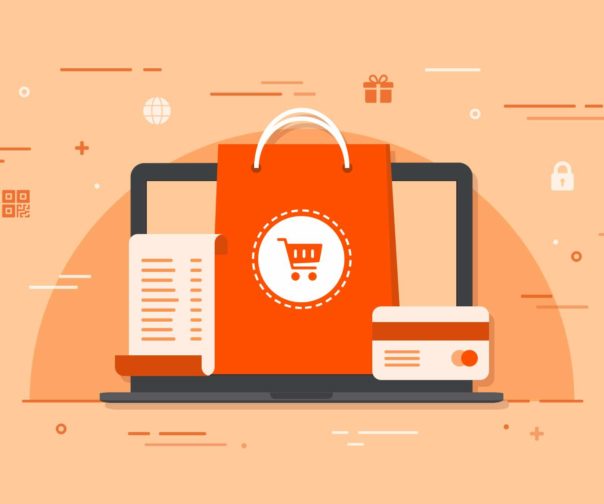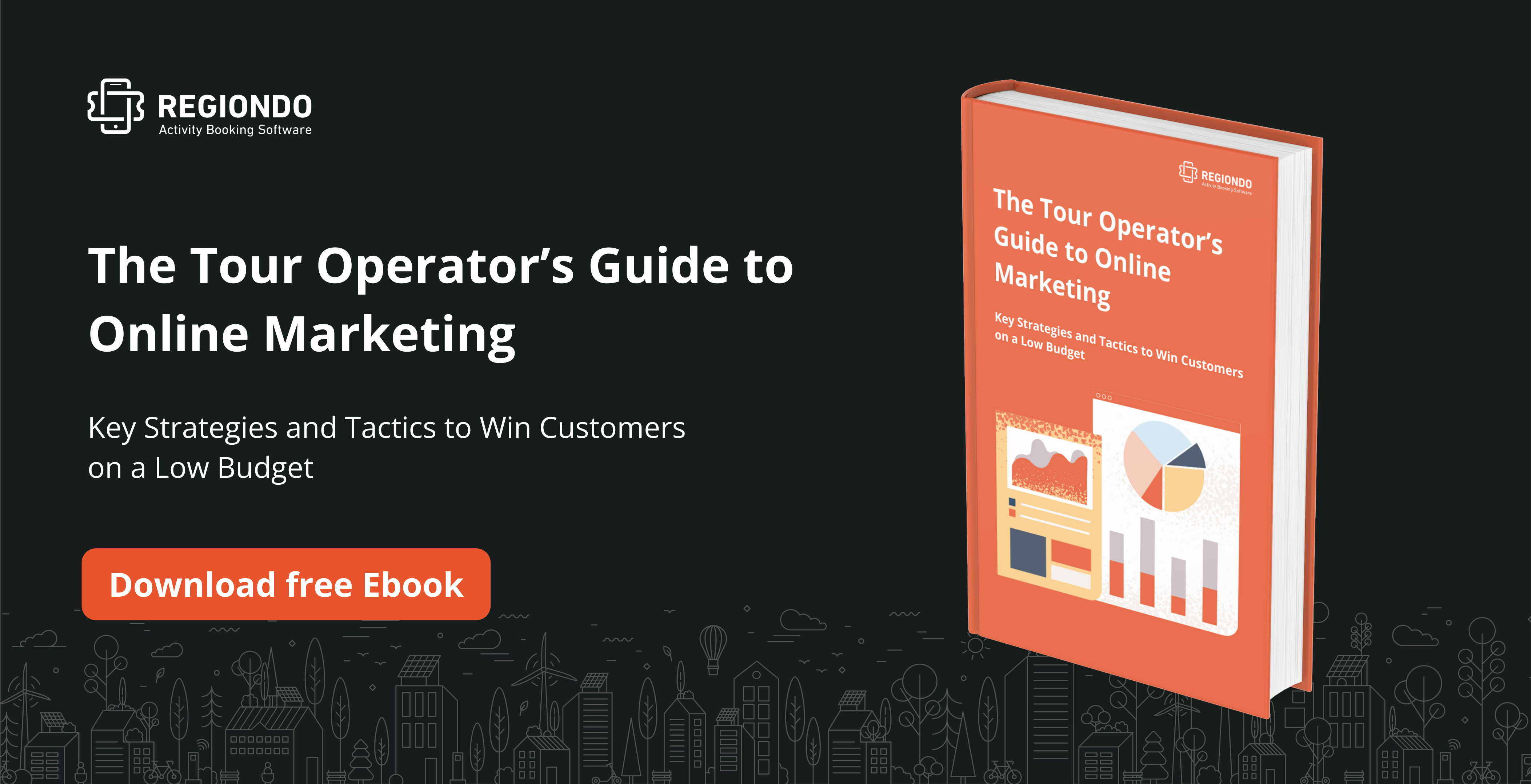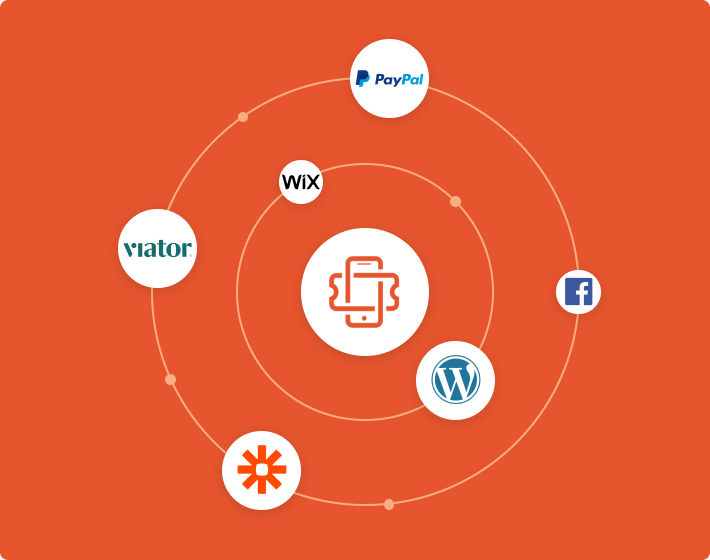With lockdown rules changing on what seems to be a weekly basis, tour and activity providers need to find new and creative ways of increasing revenue and staying afloat. Merchandise and add-ons can certainly help as they not only increase customer satisfaction but also basket value – sounds ideal, right?
In this blog post, we will dig a little deeper into how you can use these tools to boost sales amid the uncertainty of COVID.
Ready? Let’s go.
What are Add-ons?
Add-ons are any product or service that you can sell in addition to your current offer and are usually offered upon check-out. Have you ever been offered the option to rent headphones for audio commentary when you book a museum tour? That’s an add-on. Or have you had the chance to buy another ticket at a reduced price? Another add-on. In general, add-ons should be relevant to the offer the customer is already considering.
What is Merchandise?
Merchandise covers any branded items that you sell to your customers. They could be sold as add-ons or as standalone products.
For example, did you ever go to a music gig and see stands selling band t-shirts? That’s merchandise. You can brand pretty much anything nowadays, from stickers and hoodies to chocolate and straws (yes, rather random!) More and more tour operators and activity providers are starting to offer merchandise as a way to supplement their revenue.
Should you offer add-ons and merchandise?
To be honest, it all depends on whether it makes sense for your business and whether you have the capacity to do so. We would sway more towards yes because your activity/tour will likely have extra things that can make the experience even more special for your clients.
Let’s dig a little deeper into add-ons. If you have an online booking system, then you should certainly consider implementing these into your booking process. For effective add-on selling, you need to thoroughly understand your customer’s needs. Your add-ons shouldn’t be considered as a sales opportunity, but a solution that will make their experience more enjoyable, comfortable, or memorable. Before you present your customers with add-on choices, ask yourself if the item in question is truly relevant and useful.
Add-ons generally don’t cost you anything extra. One easy way would be to offer discounted extra tickets upon check-out. You would be surprised at how many people will take you up on this offer!
Do you offer a memorable and exciting experience? Why not offer photos or videos to your guests. These are perfect souvenirs that can also be used for sharing user-generated content thus giving a boost to your content marketing plan!

Are you an outdoor activity provider? Maybe you could offer equipment as an add-on. Rain ponchos for a walking tour or wetsuits for water sports are both relevant and useful. Rain ponchos are very cheap to purchase and you could choose to personalize them with your logo. If you offer watersports then the likelihood is you already have wetsuits available – so let’s monetize them!
Another option to consider is re-booking insurance- offering rain or bad weather insurance might encourage people to book with you over other providers, and doesn’t cost you anything other than the time that you spend organizing the re-booking.

Merchandise is another way that you can boost your sales. We are big fans of merchandise as it can mean free marketing and publicity. When you see people walking around with t-shirts from a surf school, you instantly want to know more.
It’s important to realize that merchandise can be expensive. If you want to order custom-made products directly from a factory, you would need to order in bulk to benefit from any substantial discounts. The production time can be lengthy and you need to have an expert in print production on board to succeed.
The second, less expensive, option is white labeling. This means using already existing products and adding your branding to them. These products are ready to go and can be delivered, depending on the extent of branding needed, within a few short weeks. There are a number of companies around the world that provide a variety of products for you to white label.
Now that the practicalities are out of the way, let’s discuss what you can merchandise. Pretty much everything is the answer – but we would recommend that it remains relevant to your activity. If you run a cooking school, why not create a recipe book for your clients to buy? Run an indoor ski center? You could sell branded snow globes to your guests.
People tend to be eager to buy merchandise as a great reminder of their activity. It can also be considered as very cool and hip, as merchandise fits into today’s ‘experiential’ way of life. If you didn’t photograph it, it didn’t happen. In the same vein, if you didn’t buy merch you didn’t do the activity / take the tour!
Want to see how it’s done?
Let’s take a look at a couple of companies that are seamlessly integrating add-ons and merchandise into their booking process.
The London Dungeon is a scary museum in the heart of the city that showcases terrifying moments from its history. They have come up with the genius idea of offering face masks as an add-on. Face masks are compulsory at the attraction and most people have their own – but it is relevant to the times and fits in perfectly with the branding of this terrifying attraction. Personalized face coverings are relatively cheap to white-label and you can sell them at a high mark up thus giving your bottom line a much-needed boost.

The London Dungeon also offers a variety of discounts when you finalize your booking. They are tailored towards their target group – tourists visiting the city who want to soak in the sights. Why wouldn’t they want to take advantage of a discount to the London Eye and Madam Tussauds?

Moving on to Maxx Area – Munich’s largest indoor fun sports arena, offering a variety of activities from laser quest to trampolining. They offer MAXX Jumping Socks as an extra for guests booking trampoline sessions online. What’s more, these socks are compulsory so they are certainly boosting their revenue by selling these as an add-on on top of the activity price.

Solardraisine Überwaldbahn is the world’s first solar-powered trolley cart, offering scenic tours in Hessen, Germany. Customers booking online can also purchase souvenirs as a reminder of their trip. Both of these items are highly relevant to the activity itself – the honey comes from the beehives seen on the route and the book explains the history of the region itself. This merchandise is unique and unusual – factors that definitely increase their appeal!

Conclusion
As you can see, there are so many options for you to use add-ons and merchandise to boost your sales. We would recommend organizing a brainstorming session with your team to come up with ideas that are relevant, unique, and fun. Once you do this, you will soon see your revenue increasing!
What’s more, appropriate add-ons and merchandise will also lead to higher customer satisfaction – meaning a higher chance of repeat business and word-of-mouth recommendations. What more could you possibly want?
One last tip? Know your customer and why they are choosing to do your activity or take your tour. As long as you keep them front of mind when making any decisions on add-ons and merchandise, you won’t go wrong.
You might also like:



